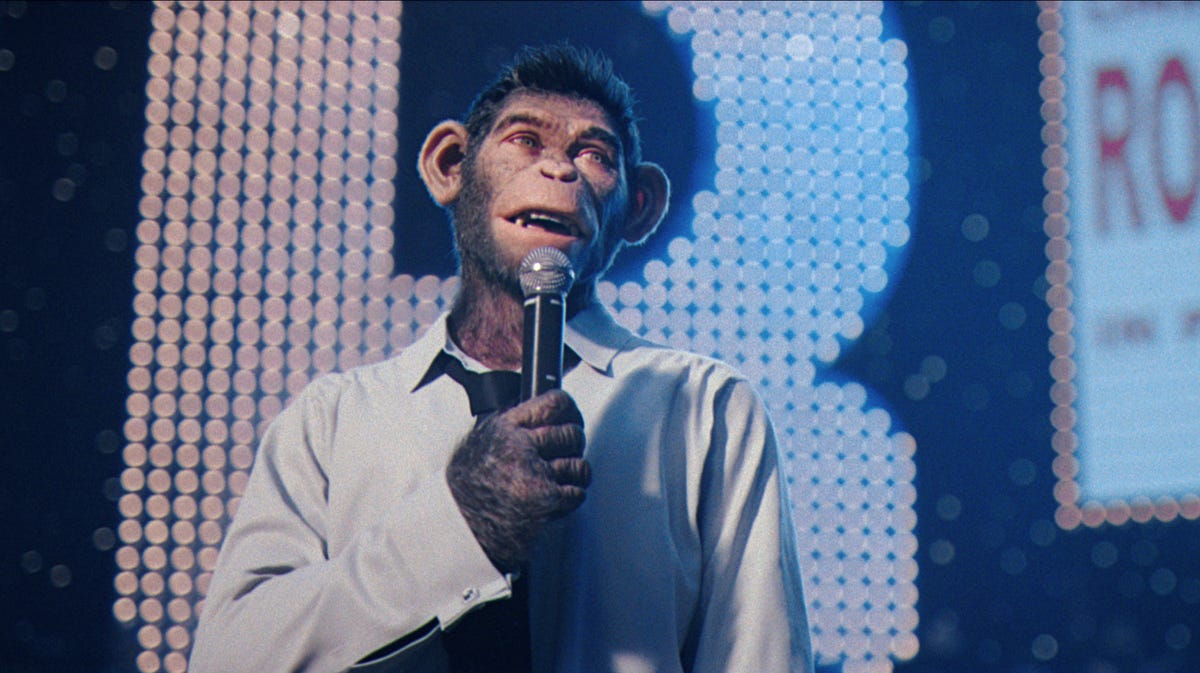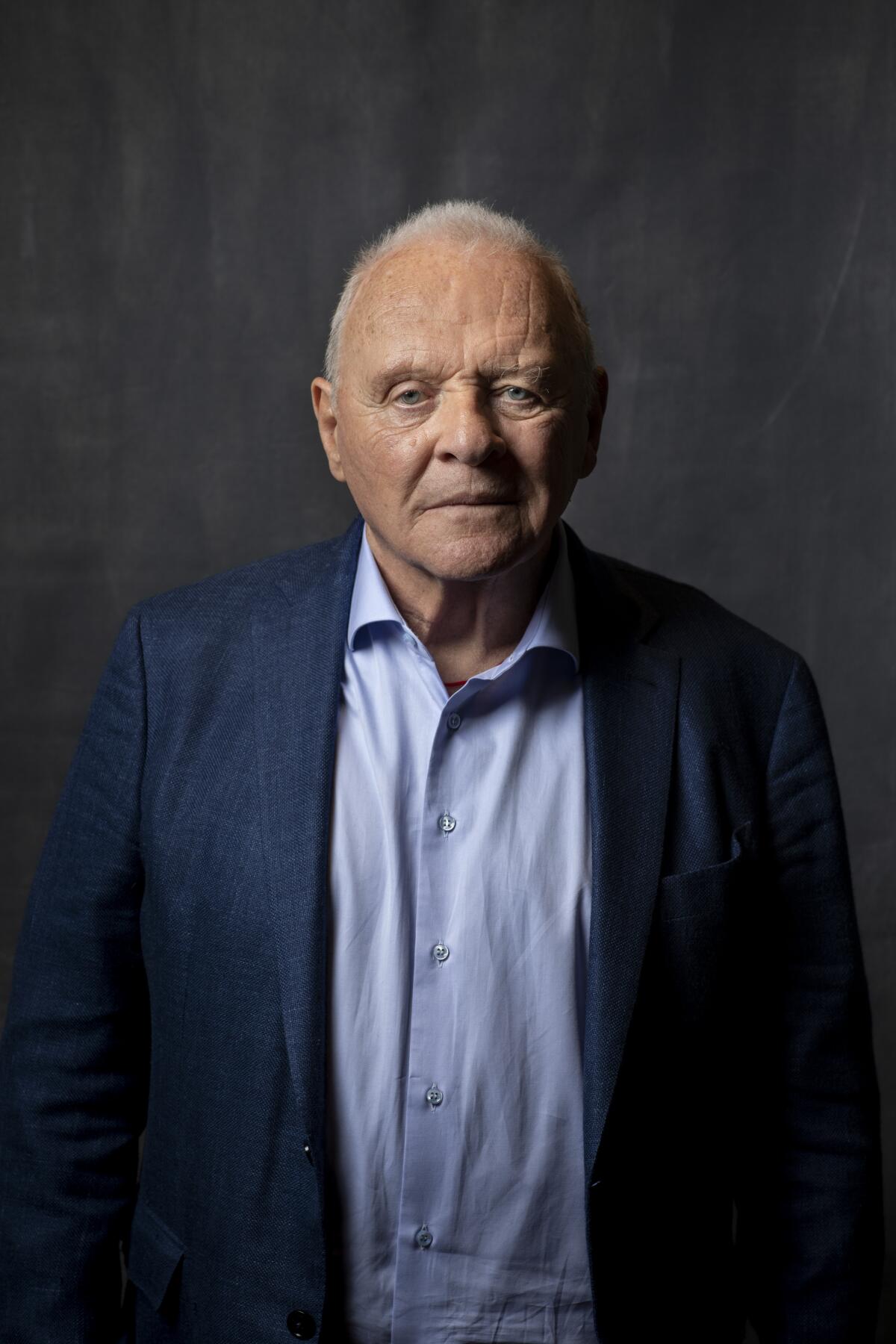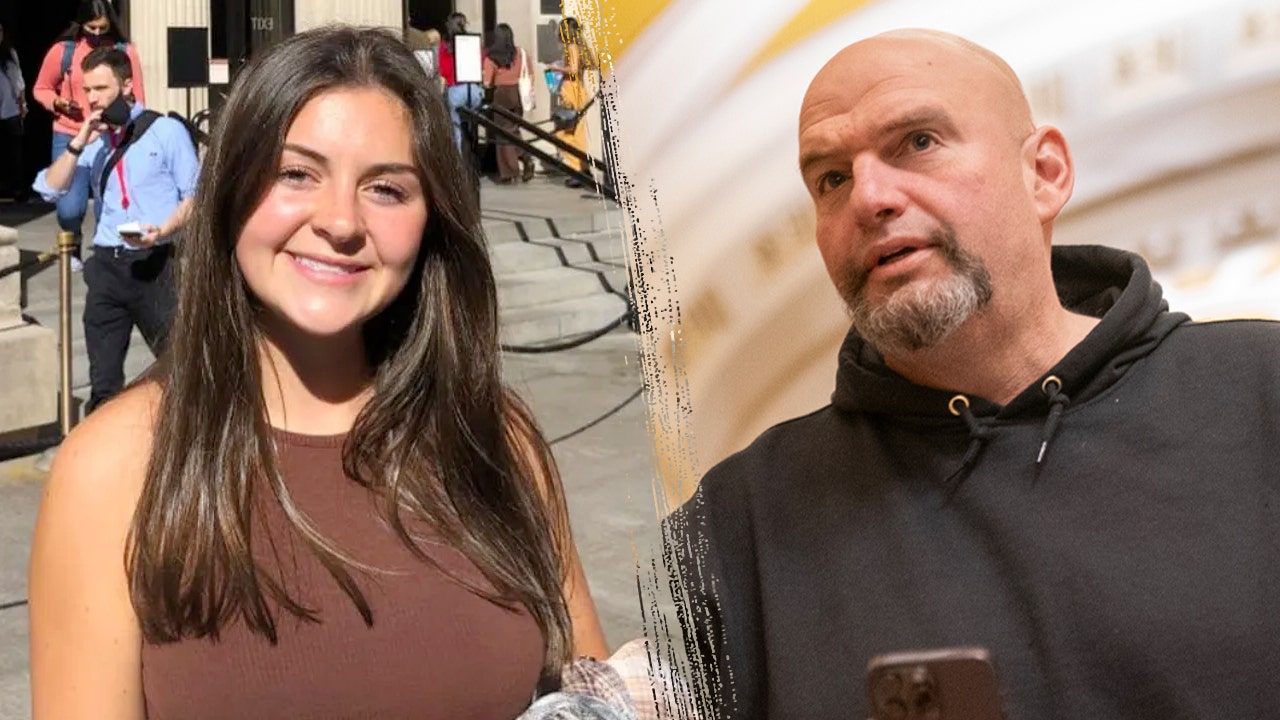Entertainment
Netflix helped bring F1 to new heights. Now the sport is poised to return the favor

A few seasons into the run of Netflix’s Formula 1 docuseries “Drive to Survive,” the racing league’s governing body, the Fédération Internationale de l’Automobile (FIA), presented the platform with a deck containing evidence of “the Netflix effect.” Since the series premiered in 2019 as part of a concerted effort to expand the sport’s footprint in the U.S., officials had seen social media engagement, merchandising, attendance and ratings for race telecasts improve in its least-penetrated major market.
“It’s tough to totally decouple — Formula 1 was doing a lot of great new stuff, you had a broadcast partner in ESPN that was also prioritizing it, and you had a partner in Netflix that was promoting the sport through the docuseries,” recalls Brandon Riegg, vice president, nonfiction series & sports, at the streamer. “But they for sure were very generous and said, ‘We attribute a lot of this to Netflix.’ And when you saw the gains that they made across many categories, it was impressive, and I felt like we could take credit for at least a portion of that.”
Now Formula 1 is poised to return the favor.
With the premiere Friday of “Senna,” a scripted miniseries about the life and career of Brazilian F1 legend Ayrton Senna, the championship’s rich lore — replete with archival footage and FIA authorization to reconstruct races, podiums, logos, uniforms and track layouts from Senna’s heyday — becomes the source material for yet another evolution in one of the most innovative relationships in sports entertainment.
“It becomes almost like an origin story for F1,” says “Senna” showrunner Vicente Amorim. “You love ‘Drive to Survive’? You’re an F1 fan? You’re maybe thinking of watching the ‘F1’ movie next year? Maybe have a look at how it all started.”
If Warner Bros.’ 2025 feature, developed in collaboration with the FIA and starring Brad Pitt, represents the sport’s promotional campaign at the scale of a Hollywood blockbuster, “Senna” flows instead from Netflix’s distinct approach to international television. The six-part series, which follows its dashing hero from his karting days in São Paulo to his tragic death, at 34, during the 1994 San Marino Grand Prix, was produced in Brazil, filmed largely in Portuguese and relied on Latin American artisans, particularly in the creation of its astonishing replica cars. It’s the same regional model that created crossover hits such as “Élite” and “La Casa de las Flores,” applied to one of the most successful drivers in F1 history.
“We really made those shows thinking they would be huge in Spain and Mexico, respectively, and I think it’s precisely their authenticity and their very specific local value, culture, look and feel that made them unique for their own countries and then globally appealing,” says Francisco Ramos, Netflix’s vice president of content Latin America, who worked on both titles. “What we’ve discovered, through this journey of almost 10 years making local content outside of the U.S., is that the most accurate, authentic stories that properly represent the cultures from which they come are the ones that are able to find resonance outside of their home territory.”
Conceived by the racer’s family and Brazilian production company Gullane, “Senna” came to Netflix after plans for a feature film hit creative and financial roadblocks — and soon found a devoted fan in Amorim, who vividly remembers Senna’s zenith in the late 1980s and early 1990s, when he won three world championships. “It becomes almost like a religion,” Amorim says of growing up in Brazil during this period. “Every Sunday, you turn on the TV to watch Senna probably win.”
Although its focus is the triumph and tragedy of Senna’s career, as well as his relationships with his parents, Miltão (Marco Ricca) and Zaza (Susana Ribeiro), and his glamorous pop star girlfriend, Xuxa (Pâmela Tomé), “Senna” is also the tale of a fast-modernizing sport, one on the cusp of becoming the glitzy global juggernaut it is today. In 1994, the year Senna died, the F1 world championship consisted of 16 races, 11 of them in Europe; 30 years on, the season now spans 24 races on five continents, including three in the United States alone. And Senna himself — handsome, media savvy and impatient with the Old World politics he found in F1 when he joined the circuit in 1984 — was instrumental in setting the transformation in motion. As Amorim puts it, “There’s an F1 ‘Before Senna’ and an F1 ‘After Senna.’”
Gabriel Leone as Ayrton Senna, right, with Matt Mella as Senna’s teammate and rival Alain Prost.
(Alan Roskyn / Netflix)
The makeup of the “After Senna” F1 fan base is, in fact, a significant part of why Netflix has invested so much in its partnership with the sport. Although the FIA first envisioned “Drive to Survive” as a way to reach American viewers, according to Riegg, Netflix saw the docuseries as a “hedged bet”: If it failed to catch on in the States, it still had potential in other countries where Netflix operates that had established F1 followings.
In the end, “Drive to Survive” boosted interest in F1 not only in the U.S. but also globally: When the FIA presented Netflix with its deck about the series’ impact, “They made gains in some of the markets they thought were the most mature, including Brazil and Italy and Spain,” Riegg says.
Although Ramos insists that “Senna,” which was first announced in 2020, was not expressly intended to “feed off” the success of “Drive to Survive,” in many ways it epitomizes the same effort to diversify output and audience that has defined Netflix’s business in recent years. The release of promotional art and the trailer for “Senna” attracted interest not only in Brazil but also in other F1 strongholds like Mexico, Argentina, Italy and Japan, while the docuseries might be said to have primed the pump for potential viewers in places like the U.S. that have a less established F1 following.
“During the process of getting this developed and made, ‘Drive to Survive’ became bigger and bigger,” Ramos says. “That’s not the way we planned it. … But for sure there’s a benefit that I cannot steer away from.”
The benefit might also work in reverse, Riegg acknowledges, creating a chance “to broaden the funnel or the entry point for people that are going to become fans of Formula 1 in general, whether that’s the races or something like our documentary series.”
It’s an opportune moment for Netflix’s relationship with F1 to evolve, as “Drive to Survive” confronts its first real headwinds after years of viewership growth.
“I think there’s been a stabilization of the viewership the last couple seasons,” Riegg says. “It did the first few seasons continue to grow consistently and — I guess ‘plateau’ is one word — then found its audience. There’s a natural ebb and flow on all of these shows, especially the sports shows, or even our dating shows, which is analogous in certain ways, where some seasons you just have stronger stories than others. I think part of what F1 deals with that’s somewhat different than some of the other sports is you’ve had a winner in Max [Verstappen] and a team in Red Bull that’s really dominated for many seasons in a row so there’s sort of been less suspense and perhaps drama over the course of the season.”
What’s not yet on the table for Netflix, Riegg emphasizes, is live Formula 1 racing, although the FIA’s current U.S. television deal, with ESPN, expires in 2025. And it’s not because of the challenges the platform has faced in scaling up its capacity for live programming, most recently during the boxing match between Jake Paul and Mike Tyson, which led to widespread complaints of freezing, buffering and poor image quality. It’s because Netflix’s current focus vis-a-vis live television is on one-off events, rather than on a season-long commitment. “We’re in the crawl, walk, run phase,” Riegg says. “We’re definitely not in that business right now.”
And as “Senna” itself understands, it’s commerce as much as horsepower that makes the wheels of the sport turn. “F1 is a business,” Amorim says, repeating a real-life line from Senna rival Terry Fullerton that’s included in the series. “Except for two hours on Sunday.”

Movie Reviews
‘Better Man’ movie review: Robbie Williams is a chimp. (Just go with it.)

Robbie Williams talks Golden Globe-nominated film ‘Better Man’
Robbie Williams and wife Ayda Field tell USA TODAY’s Ralphie Aversa what it feels like to be at the Golden Globes.
Music biopics are too often predictable, formulaic and, let’s face it, dull. One way to liven them up, however, is to venture way outside the box and make the central subject an anthropomorphic animal. And while an alligator Freddie Mercury in “Bohemian Rhapsody” or a sloth Bob Dylan in “A Complete Unknown” might have been bridges too far, a chimpanzee Robbie Williams defies logic and somehow works in “Better Man.”
Director Michael Gracey’s admirably eccentric biopic/jukebox musical (★★★ out of four; rated R; in select theaters now, nationwide Friday) still boasts the signature tropes of its ilk and the career-tanking vices of many a “Behind the Music” episode. Yet the fact that the ultra-cheeky Williams is inexplicably presented as a bawdy CG ape man (given cool moves and voice via performance capture by Jonno Davies) matches the fantastical nature of the British pop star’s bananas rise-and-fall-and-rise-again tale.
Join our Watch Party! Sign up to receive USA TODAY’s movie and TV recommendations right in your inbox.
The movie also has a lot in common with Gracey’s most famous effort, “The Greatest Showman,” featuring well-crafted, effervescent musical numbers doing what they can to make up for oversentimentality and an unfocused narrative.
Narrated by Williams himself, “Better Man” chronicles his life starting as a little simian dude playing soccer in the streets with his mates – and failing to impress his peers. Like his father Peter (Steve Pemberton), Robbie wants to be somebody and slowly he begins to embrace a charismatic, wild-child personality that wins him a spot in the boy band Take That. His brazen and outrageous personality wins over some like pop-star girlfriend Nicole Appleton (Raechelle Banno) – and his many fans – but irks many others, from his bandmates and manager (Damon Herriman) to members of Oasis.
The middle of the movie is where “Better Man” finds its groove. Robbie sings “Rock DJ” and his group pogo-sticks through London’s busy Regent Street in the film’s most spectacular sequence. And as the insecure Robbie goes down a bad path, he’s forced to literally fight the conflicting parts of his pop-star persona. Drugs and being a selfish jerk threaten everything, of course, and seeing a chimp go through the out-of-control partying instead of a normal dude is a bit different. The family drama peppered through the film leans too earnest, leading to an ending that pours on the schmaltz way too hard. Brash simian Robbie is a lot more fun to watch than soppy simian Robbie.
No one’s ever going to play a primate like the brilliant Andy Serkis in his “Planet of the Apes” films. Davies does a good job at moving in such a way that’s human but also a little bit wild, which adds to the hyperrealism of a proudly oddball movie. It doesn’t completely explain why exactly Williams is a chimp in the biopic – he’s said he feels “less evolved” than others, and Nicole calls Robbie an “animal” during a fight – but it makes that bizarre choice a little less head-scratching.
Interestingly, the best part of “Better Man” is Williams. He sings the songs throughout the movie – including nifty new tune “Forbidden Road” – and his fabulous narration hilariously slings jabs and adds an emotional gravitas to his screen counterpart’s struggles. When the film goes most over the top, Williams’ commentary keeps it grounded.
“Better Man” isn’t perfect – as a straightforward effort, it doesn’t hold a candle to, say, “A Complete Unknown.” But it’s never boring, either. And the film is easily the most idiosyncratic of its kind, at least until that inevitable Barry Manilow biopic featuring a yeti.
Entertainment
Among tens of thousands of displaced Angelenos, celebrities face the same devastating losses

The historic wildfires blazing across Los Angeles County this week have wiped out more than 2,000 structures, killed at least five people and left countless residents reeling in heartbreak. Given the fabric of the communities in and around L.A., celebrities are among those facing loss.
In one of the most destructive firestorms to hit the region in recent memory, at least 130,000 Angelenos have fled for safety as fires — stoked by worse-than-usual “life-threatening and destructive” winds — rampaged in the Pacific Palisades, Hollywood Hills and Altadena.
“We are absolutely not out of the danger yet,” Los Angeles Fire Department Chief Kristin Crowley said Wednesday.
From Mandy Moore to Chrissy Teigen and John Legend, stars have have been speaking out about their evacuation efforts, loss of property and efforts to help fire victims. While they, like so many Angelenos, remain displaced, firefighters continue to battle the blazes that have erupted since Tuesday.
Paris Hilton
Paris Hilton said she watched her Malibu home burn on television.
(Christina House / Los Angeles Times)
“Heartbroken beyond words. … Sitting with my family, watching the news, and seeing our home in Malibu burn to the ground on live TV is something no one should ever have to experience,” the deejay, reality TV star and heiress wrote Wednesday on Instagram as the 0% contained Palisades fire continued to burn. “This home was where we built so many precious memories. It’s where Phoenix took his first steps and where we dreamed of building a lifetime of memories with London.
“While the loss is overwhelming, I’m holding onto gratitude that my family and pets are safe. My heart and prayers are going out to every family affected by these fires. To all the people who have lost their homes, their memories, and their beloved pets. My heartaches for those still in harm’s way or mourning greater losses. The devastation is unimaginable. To know so many are waking up today without the place they called home is truly heartbreaking. … Please, everyone, stay safe and follow evacuation orders. Let’s protect one another and hold onto hope that these fires will soon be contained.🙏 Sending so much love and strength to all of you. We’re in this together, LA. … Hug your loved ones a little tighter tonight. You never know when everything could change.”
Mandy Moore

Many Moore said goodbye to her Altadena home via an Instagram post.
(Christina House / Los Angeles Times)
“I love you, Altadena,” the “This Is Us” star wrote Wednesday on Instagram as she drove through her community, which was struck by the Eaton fire. “Grateful for my family and pets getting out last night before it was too late (and endless gratitude to friends for taking us in and bringing us clothes and blankets). Honestly, I’m in shock and feeling numb for all so many have lost, including my family. My children’s school is gone. Our favorite restaurants, leveled. So many friends and loved ones have lost everything too. Our community is broken but we will be here to rebuild together. Sending love to all affected and on the front lines trying to get this under control.”
Billy Crystal

Janice Crystal and Billy Crystal lost their Pacific Palisades home of 45 years.
(Charles Sykes / Invision / Associated Press)
“Words cannot describe the enormity of the devastation we are witnessing and experiencing,” Billy Crystal and his wife, Janice, said in a joint statement to the Associated Press about their Pacific Palisades home. “We ache for our friends and neighbors who have also lost their homes and businesses in this tragedy. Janice and I lived in our home since 1979. We raised our children and grandchildren here. Every inch of our house was filled with love. Beautiful memories that can’t be taken away. We are heartbroken of course but with the love of our children and friends we will get through this.”
Steve Guttenberg

Interviewed on TV while evacuating from Pacific Palisades, Steve Guttenberg urged people not to abandon their cars without leaving their keys behind.
(Richard Shotwell / Invision / Associated Press)
In what might be the most viral celebrity interview of the fire news cycle, the “Police Academy” star told a KTLA reporter on Tuesday that he had been working to clear abandoned cars on Sunset Boulevard and Palisades Drive in his neighborhood to make a path for fire trucks and emergency vehicles. He did not indicate the condition of his home, but said later on the “Today” show that he would go back soon to see what was left.
“What’s happening is people take their keys with them as if they’re in a parking lot. This is not a parking lot. We really need people to move their cars,” the longtime Pacific Palisades resident said. “If you leave your car behind, leave the key in there so a guy like me can move your car so that these fire trucks can get up there.”
Cameron Mathison

Cameron Mathison showed footage of his burned home.
(Jordan Strauss / Invision / Associated Press)
“General Hospital” star Mathison shared footage from his street showing the destruction that overtook his block in the Pacific Palisades, noting on Instagram stories that “the last property is where our house was.” Mathison said he and his family are safe but showed footage of “what’s left of our beautiful home.”
In an appearance on “Cuomo,” the soap star said his family is safe but the losses have been devastating.
“I’ve never experienced anything like it. It just doesn’t feel real and I know I’m not alone. I know there’s hundreds, if not thousands of people out there and getting affected by these fires, and it’s very cool to see you kind of touching base with a lot of them to share their stories too,” Mathison said, adding, “That video was taken early in the morning … we’d been up, we’d been watching the news, and then I got up around 5, and they were reporting from our block, and I could see houses going down, and it looked insane, but I couldn’t see if our house was OK, and I couldn’t stand it anymore, and I got my car, and I just kind of drove in through the streets. … I kind of made my way up almost in the dark, and the cloud, like, it was, it was an insane scene. And as I came around the corner, you know what used to be, my house, our house was, was no longer and it is, it doesn’t, doesn’t seem real.”
Diane Warren

Diane Warren lost her beach house in Malibu.
(Dania Maxwell / Los Angeles Times)
“This is the last pic I took of Leah’s rock from my beach house,” the Grammy-winning songwriter wrote Wednesday on Instagram, sharing a photo from a Malibu beach amid the Palisades fire. “I’ve had this house for almost 30 years. It looks like it was lost in the fire last nite. There’s a rainbow shining on it which I’m taking as a sign of hope for all creatures who have been affected by this tragedy. The animals and the rescue ranch are OK tho which is the most important thing. Stay safe everyone.”
Melissa Rivers

Melissa Rivers fled her Palisades-area home with important documents and irreplaceable items connected to her late mother, Joan Rivers.
(Al Seib / Los Angeles Times)
Rivers, a TV personality and the daughter of famed comic Joan Rivers, told CNN that she fled her Palisades-area home on Wednesday and took whatever she could, including her mother’s Daytime Emmy Award for “The Joan Rivers Show.”
“Luckily, my office which is in — was in — my home… [I grabbed] whatever was there,” Melissa Rivers said. “In my personal situation, that’s it, that’s the end of everything that belonged to my family and the history of it. To be 100% honest, I grabbed my mom’s Emmy, a photo of my dad, and a drawing that my mother had done of me and my son … It’s amazing what you grab, it’s amazing what you take. I went for a drawing of my mother’s rather than a photo because I know I can find the photos. [But a drawing of hers] I can’t replace.”
Cary Elwes

Cary Elwes said he lost his home in the Palisades fire that also affected Malibu.
(Chris Pizzello / Invision / Associated Press)
“Update from the fire. Firstly, myself and my family are all safe, thank God,” “The Princess Bride” star wrote Wednesday on Instagram after the Palisades fire broke out. “Sadly we did lose our home but we are grateful to have survived this truly devastating fire. Our hearts go out to all the families impacted by this tragic event and we also wish to extend our gratitude to all the firefighters, first responders and law enforcement who worked so tirelessly through the night and are still at it. We want to thank everyone for the incredible outpouring of support. It really means a great deal to us.”
Ricki Lake

Ricki Lake lost her “dream home” overlooking Malibu in the Palisades fire.
(Amy Sussman / Getty Images)
“It’s all gone. I can’t believe I am typing these words,” the former talk-show host wrote Wednesday on Instagram, sharing the loss of her “dream home.” “After a valiant and brave effort by our friend and hero @kirbykotler_ Ross and I lost our dream home. This description ‘dream home’ doesn’t suffice. It was our heaven on earth. The place where we planned to grow old together. We never took our heavenly spot on the bluff overlooking our beloved malibu for granted, not even for one second. I shared our sunset views almost daily with all of you.
“This loss is immeasurable. It’s the spot where we got married 3 years ago. I grieve along with all of those suffering during this apocalyptic event. Praying for all of my neighbors, my friends, my community, the animals, the firefighters and first responders. More to share soon of how we escaped with Dolly and not much else. For now I grieve.”
James Woods

James Woods lost his newly renovated Pacific Palisades home.
(Evan Agostini / Invision / Associated Press)
The Emmy-winning actor fought back tears on air with CNN while discussing his newly renovated Pacific Palisades home and its evacuation during the Palisades fire. He said he and his wife, Sara Miller-Woods, had returned to the home last month after fixing up the property,
“I took this from the deck of our beautiful and much beloved home in the Palisades last night,” Woods wrote Wednesday on Instagram. “Now all the fire and smoke alarms are going off on our iPhones. It’s truly heartbreaking.”
Leighton Meester and Adam Brody

Leighton Meester, left, and Adam Brody reportedly lost their Pacific Palisades home.
(Jordan Strauss / Invision / Associated Press)
The “Gossip Girl” alumna, who is married to the “Nobody Wants This” actor, reportedly lost the Pacific Palisades home that they purchased in 2019, according to TMZ and the Daily Mail. The couple has not yet commented publicly on the fires.
Anthony Hopkins

Anthony Hopkins reportedly lost his Pacific Palisades property.
(Jay L. Clendenin / Los Angeles Times)
Hopkins lost his $6-million Pacific Palisades home, the Daily Mail reported. The Oscar winner bought the home in 2001, and photos showed the four-bedroom, five-bath property reduced to rubble.
Evacuations
John Legend and Chrissy Teigen

Chrissy Teigen and John Legend left their Hollywood Hills home and took their four children and pets to a hotel Wednesday.
(Evan Agostini / Invision / Associated Press)
“This is surreal. I’m very scared now. packing,” Teigen wrote on Instagram stories as the Sunset fire erupted late Wednesday in the Hollywood Hills. “4 dogs. 4 kids and a bearded dragon walk into a hotel,” she added.
Mark Hamill

“Star Wars” star Mark Hamill said on social media that his area was being evacuated.
(Rich Fury / Getty Images)
“Personal Fire Update: 7pm-Evacuated Malibu so last-minute there small fires on both sides of the road as we approached PCH. 8:15 pm- Marilou, Trixie & I arrive at Chelsea’s house in Hollywood Most horrific fire since ‘93 … STAY SAFE! … ” the “Star Wars” star wrote Tuesday on Bluesky, later clarifying that “there ‘were’ small fires (gimme a break- we were fleeing for our lives).”
Movie Reviews
Research: How Top Reviewers Skew Online Ratings

-

 Business1 week ago
Business1 week agoThese are the top 7 issues facing the struggling restaurant industry in 2025
-

 Culture1 week ago
Culture1 week agoThe 25 worst losses in college football history, including Baylor’s 2024 entry at Colorado
-

 Sports1 week ago
Sports1 week agoThe top out-of-contract players available as free transfers: Kimmich, De Bruyne, Van Dijk…
-

 Politics1 week ago
Politics1 week agoNew Orleans attacker had 'remote detonator' for explosives in French Quarter, Biden says
-

 Politics7 days ago
Politics7 days agoCarter's judicial picks reshaped the federal bench across the country
-

 Politics5 days ago
Politics5 days agoWho Are the Recipients of the Presidential Medal of Freedom?
-

 Health4 days ago
Health4 days agoOzempic ‘microdosing’ is the new weight-loss trend: Should you try it?
-

 World1 week ago
World1 week agoIvory Coast says French troops to leave country after decades


















